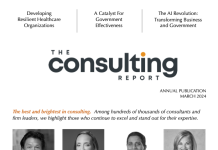Our society has seen tremendous technological growth in recent history. In the span of less than a lifetime, we have seen communications evolve from landline telephones owned by the local Bell System operator to an entire ecosystem of unique mobile devices that pack the power of a supercomputer into something that fits inside a pocket and work nearly anywhere in the world, just to mention a single example. What was brand new even ten years ago is now firmly enmeshed in our daily lives, and it is likely to drive change that will eclipse Ray Kurzweil’s prediction that we will experience 20,000 years of technological change within the next century.
Predicting which emerging technologies will make an impact as dramatic as the iPhone is another story entirely. New technology moves through multiple evolutionary phases: beginning with an “innovate” stage in which new technologies come into being with limited or no commercial momentum; growing and developing sufficiently to attract private investments in the “incubate” stage; to finally drawing adoption and spending at an enterprise scale in the “commercialized” stage. To win the disruption game, technologies need to attract significant investment and focus, which isn’t always easy for startups.
To that end, Boston Consulting Group (BCG), in collaboration with the National Association of Software and Service Companies (NASSCOM), released a report identifying 12 technologies that have seen a combination of rapid innovation and robust private funding. The list includes sustainability tech, augmented reality, sensor tech, smart robots, and autonomous analytics, among other more niche technologies. Their “Top 12” list is supported by a recent BCG survey of IT buyers, who reported that the amount they will spend on emerging tech will grow three times over the medium to long-term.
Despite lofty predictions, the business landscape for technology providers can be a brutal one, with nearly half of S&P 500 companies ceasing to exist over the past twenty years. To be successful, technology providers — especially those driving disruptive tech — will have to be agile in order to identify, develop, and fund their own “moonshots” aimed at delivering the next big thing.

























